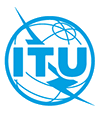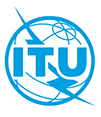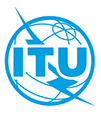ITU-T Y.3801
In the context of quantum key distribution networks (QKDNs), Recommendation ITU-T Y.3801 specifies the functional requirements for quantum layer, the key management layer, the QKDN control layer and the QKDN management layer.

In the context of quantum key distribution networks (QKDNs), Recommendation ITU-T Y.3801 specifies the functional requirements for quantum layer, the key management layer, the QKDN control layer and the QKDN management layer.

Recommendation ITU-T Y.3800 specifies an overview on networks supporting quantum key distribution (QKD).
This Recommendation aims to provide support for design, deployment, operation and maintenance to implement QKD networks (QKDNs) in terms of standardized technologies.
The relevant network aspects for conceptual structure, layered model and basic functions are within the scope of the Recommendation to support its implementation.

This Technical Report provides security considerations for quantum key distribution (QKD) network. It describes the following:

Recommendation ITU-T X.1714 describes key combination methods for quantum key distribution network (QKDN) and specifies security requirements for both the key combination and the key supply from QKDN to cryptographic applications.

Recommendation ITU-T X.1710 specifies a framework including requirements and measures to combat security threats for quantum key distribution networks (QKDNs).
It specifies a simplified QKDN structure for analysis of the relevant security threats. Security requirements and corresponding security measures are then specified on that basis.

The present document compares a selection of proposals for quantum-safe key exchanges taken from the academic literature. In particular, it includes key exchanges based on the Learning with Errors (LWE), Ring-LWE and Supersingular Isogeny Diffie-Hellman (SIDH) problems, as well as key exchanges constructed from the Niederreiter and NTRU key transport schemes.
The present document gives an overview of each key exchange, lists proposed parameters and gives software performance estimates on a range of processors. It also discusses various security and implementation considerations such as active attacks and side-channel vulnerabilities.
The present document provides a definition of management interfaces for the integration of QKD in disaggregated network control plane architectures, in particular with Software-Defined Networking (SDN). It defines abstraction models and workflows between a SDN-enabled QKD node and the SDN controller, including resource discovery, capabilities dissemination and system configuration operations. Application layer interfaces and quantum-channel interfaces are out of scope.
The present document specifies a communication protocol and data format for a quantum key distribution (QKD) network to supply cryptographic keys to an application.
The present document describes the main communication resources involved in a QKD system and the possible architectures that can be adopted when performing a QKD deployment over an optical network infrastructure. The scope of the present document is restricted to QKD deployments over fibre optical networks. Architectural options are also restricted to point-to-point communication.
The present document gives specifications and procedures for the characterization of optical components for use in QKD systems. Examples of specific tests and procedures for performing such tests are given. Due to their importance in the security of a QKD system, particular attention is given to active optical components such as optical sources and single photon detectors.
The present document aims to establish the necessary requirements for a QKD module to have a high probability of detecting and responding precisely and timely to attempts of direct physical access, and use or modification of modules inside. The principal objective is to detect any possible penetration with high probability, and resulting in the immediate zeroization of all Critical Security Parameters in plain text.
Quantum key distribution (QKD) comprises technologies that use quantum mechanical effects to distribute private keys to distant partners. The goals of the present document are as follows: